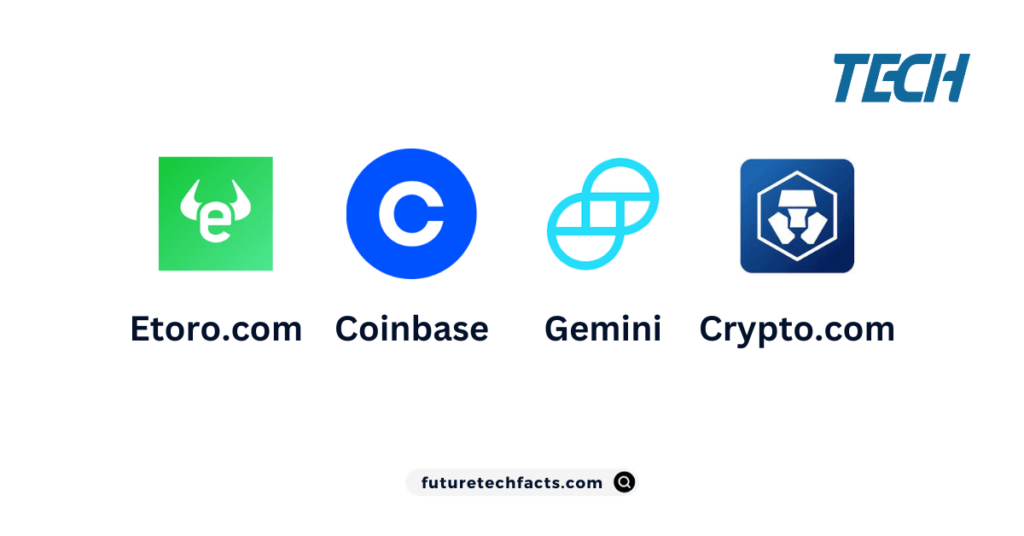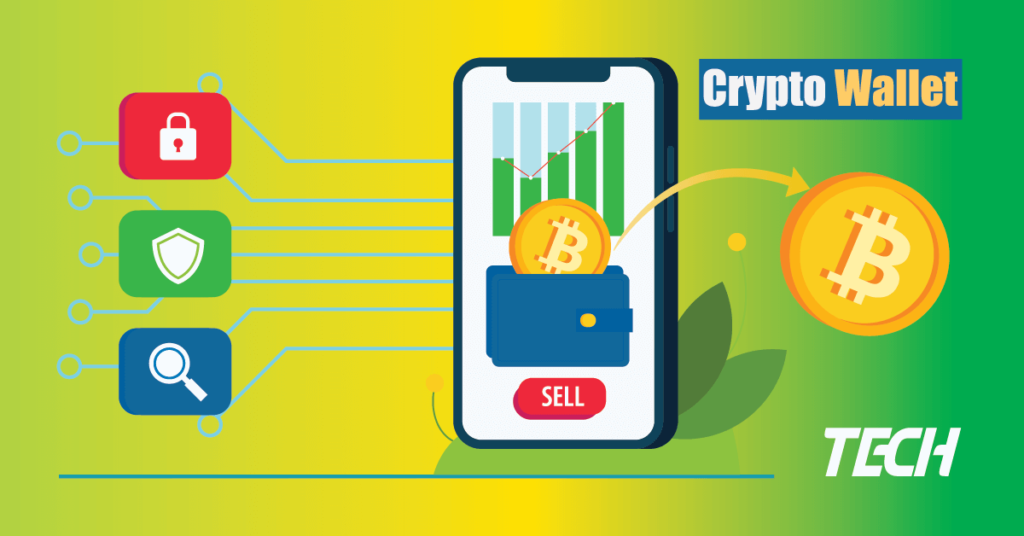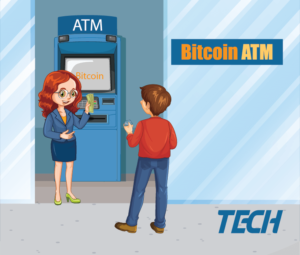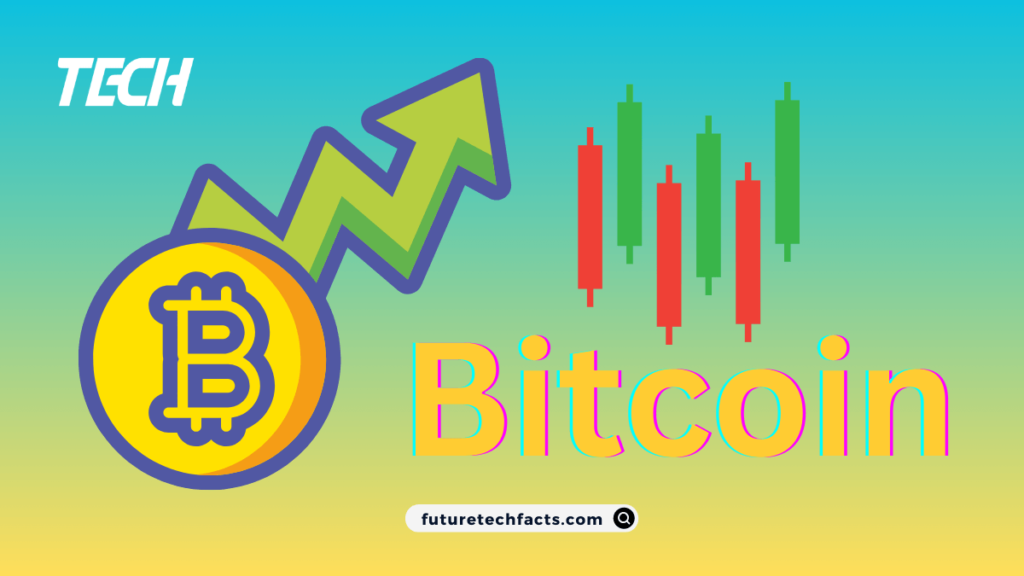In today’s booming era of finance and technology, Bitcoin has emerged as a groundbreaking digital currency that has captured the world’s attention. This article aims to provide a comprehensive overview of Bitcoin from its inception to its current role in the global market.
Table of Contents
What is Bitcoin?
Bitcoin is referred to as a cryptocurrency. A decentralized digital currency that operates on a peer-to-peer network. Bitcoin is not a traditional currency like the US dollar or Euro. Bitcoin is not regulated by any central authority such as governments or financial institutions.
Who Invented Bitcoin?
The mysterious creator of Bitcoin is known by the pseudonym Satoshi Nakamoto. Nakamoto was behind this revolutionary digital currency. He published white papers in 2008 outlining the Bitcoin process. To this day, Nakamoto’s true identity remains unknown.
How Bitcoin Mining Works:
Bitcoin mining is the process by which new Bitcoins are created and all Bitcoin transactions are verified and added to the blockchain—a digital ledger that records all Bitcoin transactions. Miners, participants in the Bitcoin network, use their computer power to solve complex mathematical problems.
Its functioning is as follows:
1. Transaction Verification: When any Bitcoin transaction is concatenated, it is broadcast throughout the network. Miners collect these transactions into blocks and create a set of unverified transactions.
2. Proof-of-work (mining process): Miners compete to solve cryptographic puzzles. This is called Proof-of-Work (PoW). In this, miners have to find a specific numerical value (nonce) that when hashed with the block’s data is such that it meets some specified standards. This is a trial-and-error process and requires efficient computational power.
3. Adding blocks to the blockchain: The miner who first solves the puzzle broadcasts the solution to the network. Other miners verify the solution, making sure it is correct and follows the rules of the Bitcoin protocol. Once verified, the new block is added to the blockchain, and the miner is rewarded with new Bitcoins that are associated with the transactions that occur in the block.
4. Rewards and Halving: As a reward for their efforts, miners receive a set number of Bitcoins for each successful block. This is called block reward. The Bitcoin protocol is scheduled to reduce the block reward by half approximately every four years. This process is called “halving” and is intended to keep the allocation of new Bitcoins constant, mimicking the phenomenon of scarcity and hoarding that occurs in comparison to monetary metals such as gold and silver.
5. Decentralization: Bitcoin mining is decentralized, which means no single entity or individual controls the entire network. It is based on a network of miners scattered around the world, who help maintain the security and integrity of the blockchain.
In essence, Bitcoin mining plays a vital role in securing the network, verifying transactions, and allocating new Bitcoins, all ensuring that a digital and trusted financial system is created.
Bitcoin Price in USD:
The price of Bitcoin is known for its volatility, experiencing significant fluctuations over short periods. To stay updated on the current value of Bitcoin in USD, investors can use various financial platforms, including cryptocurrency exchanges and market analysis websites. also, you can check the “Bitcoin Price in USD” and know about current Bitcoin prices on Google search.
Trusted Websites to Invest in Bitcoin:

1. Etoro.com: Best for Investment
Etoro is a popular social trading platform that allows users to invest in a wide range of assets, including Bitcoin. Its user-friendly interface and social trading features make it an ideal choice for both beginners and experienced investors.
2. Coinbase: Best for Beginners
As one of the most user-friendly cryptocurrency exchanges, Coinbase is an excellent choice for beginners. It offers a simple interface, educational resources, and a secure platform for buying, selling, and storing Bitcoin.
3. Gemini: Best for Security
Gemini is a cryptocurrency exchange founded by the Winklevoss twins, known for its emphasis on security. With features like two-factor authentication and insurance coverage, Gemini provides a secure environment for Bitcoin transactions.
4. Crypto.com: Best Mobile App
Crypto.com stands out for its comprehensive mobile app that offers a range of cryptocurrency-related services, including buying, selling, and managing Bitcoin. The app’s user-friendly design makes it a top choice for those on the go.
How to Buy and Sell Bitcoin:

Buying Bitcoin:
- Choose a reputable cryptocurrency exchange.
- Create an account and verify your identity.
- Deposit funds into your account.
- Navigate to the trading section and place a buy order for Bitcoin.
Selling Bitcoin:
- Access the trading section on your chosen platform.
- Select the amount of Bitcoin you want to sell.
- Place a sell order and confirm the transaction.
- Withdraw the proceeds to your linked bank account.
What is a Bitcoin ATM and what does it do?

Bitcoin ATM is a special type of ATM that provides people with the facility to buy and sell bitcoins. This particular ATM is designed to handle transactions related to the Bitcoin cryptocurrency. It can be used to convert Bitcoin into local currency or other digital assets.
The functioning of a Bitcoin ATM is usually as follows:
- Account Verification: People use ATMs to verify their Bitcoin wallets. In this, some ATMs may ask for identity verification (KYC) documents from the users first.
- Buying or Selling Bitcoins: After verification, users can buy or sell Bitcoins. They enter their investment on the ATM screen and then the ATM promises to give them that amount of Bitcoins.
- Bitcoin Transaction: The ATM initiates a Bitcoin transaction to complete this transaction. It works by sending Bitcoins from the user’s Bitcoin wallet to the ATM wallet or may work by giving Bitcoins to the users.
- Receipt or Disbursement: After the ATM confirms the transaction, it either sends the amount of cash and Bitcoin to be dispensed to the user’s Bitcoin wallet, or the cash and Bitcoin are disbursed to the user.
Bitcoin ATMs are especially popular in areas where people need a straightforward and quick way to access Bitcoin.
Recommended to Read: What Is Blockchain Technology?
Bitcoin’s Role in Future Technology:
Bitcoin has set a new direction in the field of financial systems and its role and importance may increase even further in the future.
Bitcoin’s role in future technology:
Financial solutions: Bitcoin and its technology, blockchain, can help make financial solutions more secure and transparent. It is likely to provide people with personal control and simplify financial solutions.
Business and trade: Bitcoin can encourage new models in business and trade, thereby improving the conditions for business transactions. Improving stability and verification through the use of blockchain can provide entrepreneurs with trustworthiness.
Financial Inclusion: Authorized use of Bitcoin can lead to an unbanked experience, thereby providing financial inclusion even to those who are currently deprived of it.
Changes in human society: The increasing use of Bitcoin brings greater potential for financial freedom and security, which can lead to widespread changes in human society.
Global transactions: Bitcoin and blockchain technology can make global transactions simple and transparent, thereby improving international trade.
As such, Bitcoin and Blockchain can change the financial system, business, and society in the future.
Pros and Cons of Bitcoin:

Bitcoin Pros:
- Decentralization: No central authority controls Bitcoin.
- Limited Supply: Only 21 million bitcoins will ever be mined.
- Transparency: All transactions are recorded on the blockchain.
Bitcoin Cons:
- Volatility: The value of Bitcoin can be highly unpredictable.
- Regulatory Uncertainty: Governments are still formulating regulations for cryptocurrencies.
- Security Concerns: While blockchain is secure, individual wallets and exchanges may face security issues.
Final Verdict:
Summarizing this article we see that Bitcoin is moving towards a new and excellent financial context. Bitcoin promises to improve personal control, security, and financial freedom, which could revolutionize financial services. We’ve examined reliable websites for buying, selling, and investing in Bitcoin using various methods, such as Etoro.com, Coinbase, Gemini, and Crypto.com. Each of these has its importance and users should choose based on their needs. We have explained the key benefits and some of the challenges of Bitcoin, so the user can make a careful and informed decision. Furthermore, we have mentioned Bitcoin ATMs through which people can buy and sell Bitcoins directly. We see the role of Bitcoin in the future with the potential for great change, leading to positive change in financial systems, business, and human society. Therefore, Bitcoin may one day become a vehicle for technological prosperity, leading us to a secure, free, and dynamic financial future.
Conclusion:
Bitcoin has emerged as a transformative force in the world of finance, challenging traditional notions of currency and investment. Whether you’re a seasoned investor or a newcomer to the cryptocurrency space, understanding the fundamentals of Bitcoin is essential for navigating this exciting and dynamic market. As with any investment, it’s crucial to conduct thorough research and use trusted platforms to ensure a secure and successful Bitcoin experience.
FAQ
Q1: How much is 1 Bitcoin worth?
The value of 1 Bitcoin can fluctuate widely due to market demand and supply dynamics. To check the current worth of 1 Bitcoin, you can refer to reputable cryptocurrency exchanges, financial news websites, or use cryptocurrency tracking apps for real-time updates. Click here “How much is 1 Bitcoin worth“, and know the price of 1 Bitcoin on Google now.
Q2: Where to buy Bitcoin?
You can buy Bitcoin from various cryptocurrency exchanges. Some popular and trusted platforms include Etoro, Coinbase, Gemini, and Crypto.com. Choose a platform based on your preferences, such as user-friendliness, security features, and available payment methods.
Q3: How does Bitcoin Mining work?
Bitcoin mining is the process by which new bitcoins are created, and transactions are added to the blockchain. Miners use powerful computers to solve complex mathematical problems, and when they successfully solve a problem, they are rewarded with newly created bitcoins. This process ensures the security and decentralization of the Bitcoin network.
Q4: How to Invest in Bitcoin?
Investing in Bitcoin involves a few key steps:
1. Choose a Reliable Exchange: Select a reputable cryptocurrency exchange like Etoro, Coinbase, or Gemini.
2. Create an Account: Sign up on the chosen platform, provide the necessary information, and complete the verification process.
3. Deposit Funds: Deposit funds into your account using a preferred payment method, such as bank transfer or credit card.
4. Buy Bitcoin: Navigate to the trading section of the platform, choose the amount of Bitcoin you want to buy, and place a buy order.
5. Secure Storage: Consider transferring your Bitcoin to a secure wallet, either a hardware wallet for added security or a reputable software wallet.
Remember to conduct thorough research, stay informed about market trends, and only invest what you can afford to lose. Cryptocurrency investments carry risks, and it’s essential to approach them with a well-informed and cautious mindset.
Q5: What is Bitcoin Mining?
Bitcoin mining is the process by which new bitcoins are created and transactions are added to the blockchain. Miners use powerful computers to solve complex mathematical puzzles, known as Proof-of-Work, to validate and bundle transactions into blocks. The first miner to successfully solve the puzzle broadcasts the solution to the network, and upon verification by other miners, the new block is added to the blockchain. In return for their efforts, miners are rewarded with newly created bitcoins and transaction fees. This decentralized process ensures the security and integrity of the Bitcoin network, with the mining difficulty adjusting over time to maintain a consistent issuance of new bitcoins.
Q6: What is Bitcoin cash?
Bitcoin Cash (BCH) is a cryptocurrency that emerged as a result of a hard fork from the original Bitcoin (BTC) blockchain. The fork occurred on August 1, 2017, due to disagreements within the Bitcoin community regarding the scalability and transaction processing speed of the original Bitcoin network. The primary difference between Bitcoin and Bitcoin Cash lies in their approach to block size.
Q7: What is Bitcoin worth today?
Prices of cryptocurrencies are highly volatile and can change rapidly. The price of Bitcoin is never stable. You can check the “Bitcoin Worth Today” and know current Bitcoin prices on Google search.
Q8: What is Bitcoin Wallet?
A Bitcoin wallet is a digital tool that allows users to manage their bitcoins on the blockchain. It stores the private keys necessary for accessing and controlling the ownership of bitcoins. Various types of wallets exist, including software wallets (online, desktop, and mobile), hardware wallets (physical devices for offline storage), paper wallets (physical printouts of keys), brain wallets (memorized passphrases), and multi-signature wallets (requiring multiple keys for transactions). Users choose wallets based on factors such as security, convenience, and control over their private keys, ensuring the safe storage and efficient use of their bitcoins.
Q9: What is the Bitcoin White Paper?
The Bitcoin White Paper is an important document that was written by a person or group named Satoshi Nakamoto. The title of this document is “Bitcoin: A Peer-to-Peer Electronic Cash System”. This document was published in 2008 and laid the foundation for Bitcoin, the world’s first decentralized cryptocurrency. In the white paper, Satoshi Nakamoto laid out the core ideas and mechanisms of the Bitcoin network, such as blockchain, proof-of-work, and mining to generate new Bitcoins. This document is regarded as a significant contribution to the field of cryptocurrency and blockchain technology and is viewed as one of the exemplary standard books.
Q10: What is a Bitcoin ATM?
Bitcoin ATM is a special type of ATM that allows people to buy and sell Bitcoin cryptocurrency. Through this people can buy their bitcoins and convert them into cash or receive bitcoins in cash. It is especially used in areas where people need Bitcoin immediately, and it needs to be secure and backed up.
